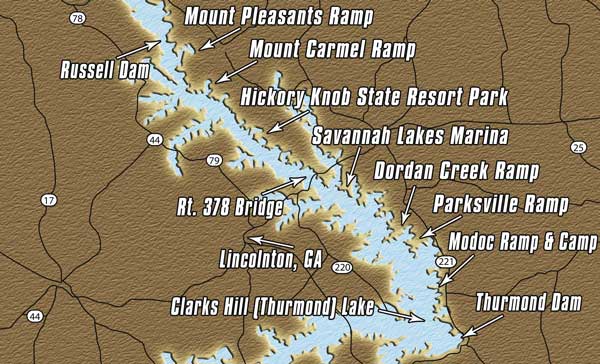
March is a big transition month — but it’s also a month for big bass catches at Clarks Hill.
On the calendar, March occupies 31 days — like a lot of the other months.
But for bass fisherman, March covers an awful lot of ground. Conditions can and will change at the drop of a cold front, and over the course of a little better than four weeks, bass fishing can go from dead to dynamite, from winter to wonderful.
Nowhere is that more true than at Clarks Hill (Thurmond) Lake on the Savannah River along the South Carolina-Georgia border. A reservoir that covers 72,000 acres and has 1,200 miles of shoreline is surely big enough that fish can be doing different things at one end than at the other — not to mention the differences between they beginning and end of the month.
Davy Hite, a veteran pro bass fisherman from Ninety Six, counts Clarks Hill among his favorite springtime fishing holes — but admits that it can give him trouble on occasion. He and Eddie Herlong of Prosperity, another Clarks Hill veteran, recognize that March is a real transition month.
“In early March, you’ll be fishing prespawn fish only, but by late March, I’ve caught spawning fish here,” said Hite, who won BASS Pride of Georgia tournament on Clarks Hill in the spring of 2006. “It really depends on what kind of spring we have.”
Herlong, who won a Wal-Mart BFL regional on Clarks Hill last fall, said, “You get some pretty drastic changes in March. It will change quite a bit from the first to the end of the month.
“March can be perfect — or it can be cruel.”
The two pros agree that the lower end of the Lake, approximately from the Rt. 378 bridge between McCormick, S.C., and Lincolnton, Ga., downstream to J. Strom Thurmond Dam, is the place to start. The water tends to be more stable, it’s less likely to be cold and muddy, and it warms up more quickly.
“I do most of my fishing on the upper end, but early in the month, I like to fish that clearer water,” said Herlong, a long-time fixture on tournament circuits around South Carolina. “There are beaucoups of good creeks on Clarks Hill. I’ve never fished ’em all.”
Herlong said he normally starts at the mouth of creeks, fishing points close to the river channel that have hard bottoms, using a crankbait, a big spinnerbait or a jig. Fish are moving out of their winter patterns as the water temperature breaks through the 50-degree mark, but they’re nowhere near moving up into shallow water to hunt for spawning areas.
Hite pinpoints creeks along the lake’s northern shoreline, also on the lower end — areas which are likely to get the most sunlight during a day’s time and therefore most likely to warm up the quickest and attract active fish earlier.
“Northeast pockets are typically the first to warm up, and they’re where fish will first move up. On the lower end, the water is more stable, and the moving water (in the lake’s upper end) doesn’t warm up as quickly,” said Hite, the 1998 FLW Tour Champion and 1999 Bassmasters Classic champion. “These are local fish we’re talking about — fish that don’t really migrate all over the lake.”
Both fishermen like to work their way back into creeks, trying to target secondary points or pockets where they expect bass to stage anywhere from eight to 15 feet deep. It’s a matter of putting your trolling motor in the water and covering a lot of ground, because you’re likely to find them in certain areas or on certain bottom features. Once you catch a couple of fish, you can get a feel for what kinds of areas are going to be productive — and duplicate that pattern.
“I like to fish live creeks — creeks that have a real creek channel coming into it, not just a place where the water backs up,” Herlong said. “Naturally, if there’s a good bedding area in the creek, flat areas toward the back, that helps. But you’ve got to go out and catch a fish or two and pay attention to what they were on, then go and look for other places like that.”
Hite starts at the mouth of a creek and works his way back in, a tactic he regards as “pretty easy to do, because you know you’ll eventually find them somewhere, then you can pattern them once you do.”
Bottom features are much more important to attracting fish in the early spring, but Herlong said that occasionally, bass will get on deeper brushpiles and stage there, waiting for the water to warm up enough to send them to the shallows. Spinnerbaits aren’t as effective then as jigs.
“In that clear water, I’m going to fish crankbaits that are shad or crawfish colors, maybe green crawfish, or chrome with a blue back, and jigs that are either blue/brown or black/blue — with a little Creepy Crawler-type trailer like a (Zoom) Baby Brush Hog,” he said. “My experience has been that a lot of times, in the early spring, when you find them on a brushpile, they won’t hit a spinnerbait, but you can catch them on a small jigs, maybe a quarter-ounce with a small skirt and a small trailer.”
Hite is also looking for days when a southerly wind is blowing, because that makes for even warmer water on those northeastern banks and more active fish.
“I look for what type of bottom the fish will be on,” he said. “It won’t always be rock — it can be red-clay, sand or slate rock. And having a south wind in March is primo. We’re correct when we say that the wind blows the fish up there, but not literally. The wind pushes the plankton in there, the baitfish move up to feed on that plankton, and that attracts the bass — it makes them want to be there.”
Hite loves to fish a medium-running crankbait in early March, having success with a number of different models — Deep Little N, Shad Rap and DT-10 — in different colors (shad, chrome or pearl) that all have blue backs in deference to the blueback herring that are Clarks Hill’s dominant forage fish. He’s also got a lot of confidence in a Buckeye Mop Jig with a Critter Craw trailer.
“A lot about the jig depends on where you find the fish,” he said. “The deeper the fish are, typically the heavier jig you use. But if you use a trailer that’s more bulky, you’ll get a slower fall than if you use a streamlined trailer. It’s really important when you’re fishing a jig to pay attention to where you get your bites.”
Hite said water clarity can play a big role in where bass stage on their first move in early March. If the water is clear, fish may be in 12 to 15 feet of water. If a good rain dirties the water up, they’ll stage closer to the surface.
As the month progresses, Herlong pays careful attention to weather patterns. When bass first stage near the mouth of creeks, a cold snap can run them back into deep water. Later in the month, a warming trend will move them farther back in creeks and into shallower water. At that point, a cold front will merely moved them into deeper water. Eventually, when the water temperature breaks the 55-degree mark and stays for a while, a cold front — unless it’s a doozy — will have less effect.
“If they ever really come in, they won’t go too far back out,” he said. “Toward the end of March, if we get three or four pretty days in a row, you’ll catch fish in visible brushpiles. When they make that big move, if you get in the right creek, every crappie pile you come to will have a bite in it.”
Hite said that brushpiles are the dominant kind of cover on Clarks Hill, along with a stumps and a very few boat docks. “If I think the fish have moved along, I’ll move up on the flats and look for stumps and brushpiles,” he said.
Bait is an enormous key to March success, Hite said. With blueback herring the primary forage, Hite tries to keep tabs on the location of big balls of baitfish on his depthfinder, helping him determine what depth he should be fishing, as well as whether or not an area might be productive.
“Herring is the primary forage in Clarks Hill, and where you catch fish boils down to where the herring want to be,” he said. “You can see them on the most nothing banks — gravel, sand or a mixture. But it’s like the bass have a different attitude when they find herring. It’s the same attitude I get when I’ve been eating fast-food cheeseburgers and I sit down in front of a big steak at Outback.
“They get more aggressive, more competitive.”
That’s why, Hite and Herlong agree, you can load the boat in March if you can find a spot with warm water, baitfish and active bass. It may not be a big spot, but it may be a productive one.
“I’ve found them concentrated on secondary points with a hard bottom and caught four or five or six fish from one little spot,” Herlong said. “You fish a lot of spots until you find that one.”
Hite said that once he finds a spot, he has a decision to make. If he’s fishing in a tournament, he might want make a closer examination of the area and figure out why the fish are there, then ride different creeks to see if he can find similar areas, giving him a handful of different places to fish over the course of several days. If he’s out fishing for fun with his sons, or fishing a one-day tournament, he’ll stay and try to load the boat.
“You’ll catch five or 10 fish in a 50- to 75-yard stretch,” he said. “Then, you evaluate what you’re trying to accomplish. When I’m fishing with my 11-year-old, it’s numbers. And a lot of times, you’ll see fish grouped up by size — they’ll be all 5s or all dinks. You don’t catch a lot of 3- and 4-pound fish in with dinks.”
By the end of the month, Herlong said that he’s looking for the first vestiges of the lake’s aquatic to start popping up. Last season, during the prolonged drought and low-water conditions, he found hydrilla or elodea growing anywhere from the bank to six or eight feet deep.
“If there’s any grass left, and the (low-water) situation remains, you’ll have a lot of fish pull up in that shallow grass,” he said. “You’ll fish across the top with a jerkbait or a spinnerbait, or you’ll swim a jig across the top of it. Those fish are getting ready for an early spawn in April.”
Later in March, Hite will work his way all the way up the lake to its headwaters: the tailrace below Russell Dam. He’ll fish river-channel bends and, as he sees fish stage and move up, he’ll move to flats off the main channel.
“On the lower end, fish will spawn a little earlier, and I’d rather fish for prespawn fish than spawning fish,” Hite said. “You can do that by moving up the lake, finding fish in different stages of the prespawn.
“Another thing that will happen if you get a warm, early spring is, the herring will move up to spawn, and when they do that, the bass will move in shallow. I like to fish a big topwater like a Spook, and I’ll throw a Red Eye Shiner up there. I’ll throw that bait on a windy day, too, especially a southerly wind.”
Hite will also look for scattered bands of shoreline vegetation that grew up along the banks during last year’s low water. “Clarks Hill has had good drawdowns in recent years, and it’s gone down enough in the summer that there will be grass that starts to grow up. When the water comes back up in the spring, you’ll sometimes find grass out to seven or eight feet deep — and you can fish it with a little crankbait,” he said.
One often-ignored factor that makes Clarks Hill a great place to fish in the spring is access. “One of the neatest things is, for the shoreline not to be developed nearly as much as, say, Lake Murray, Clarks Hill has got a lot of nice boat ramps and facilities,” he said. “You don’t have too far to go. If it’s a windy day in March, it’s nice to be able to put your boat on the truck and drive somewhere closer to where you’re going to fish.”

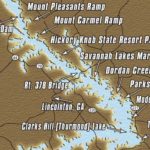
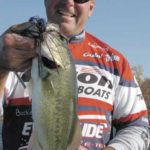
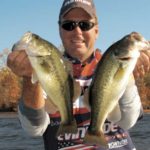
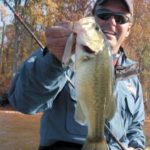
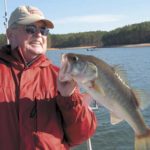
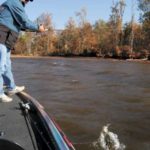
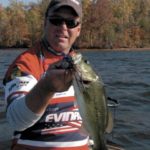



Be the first to comment